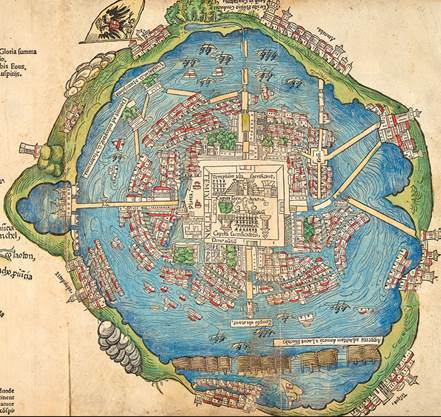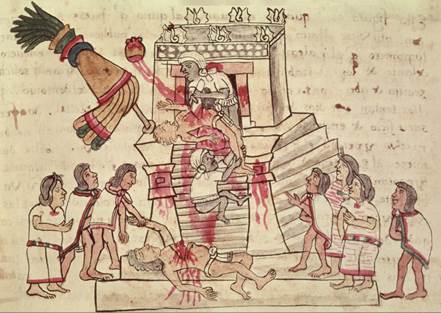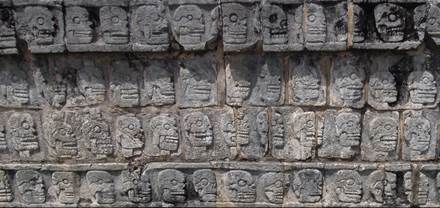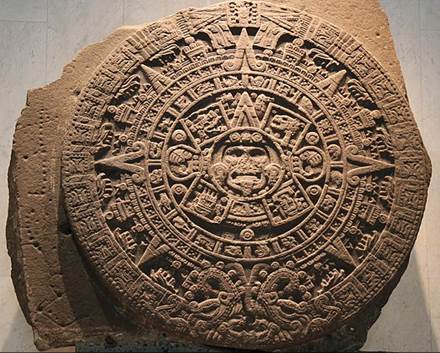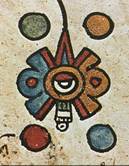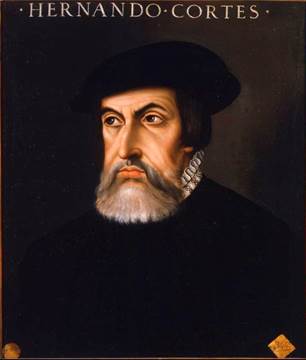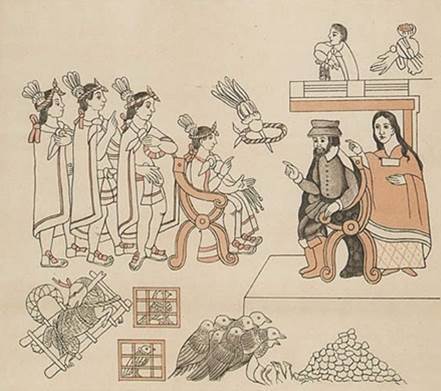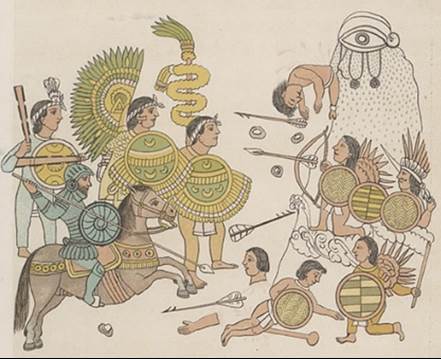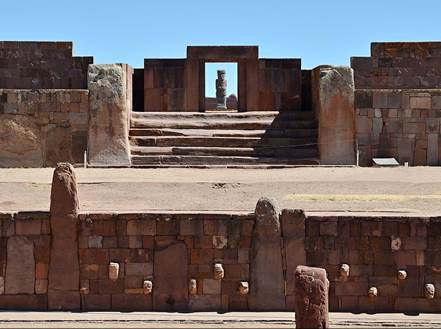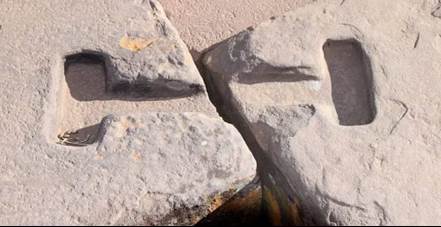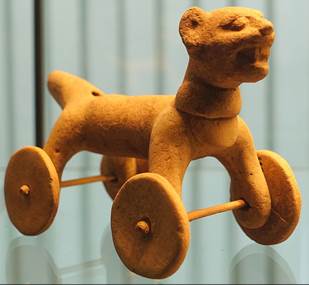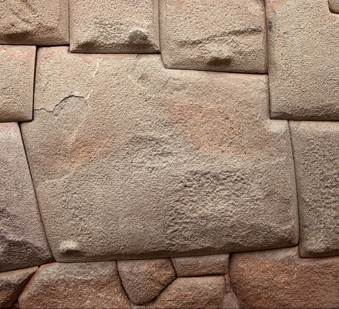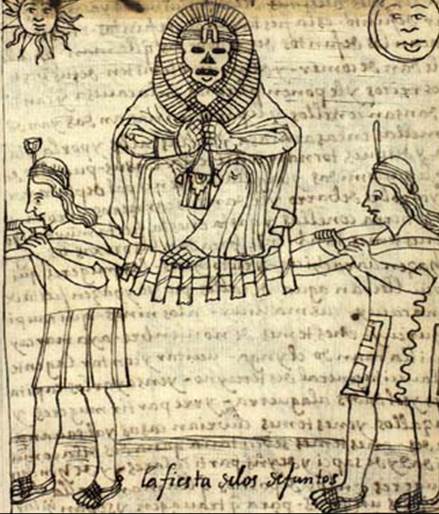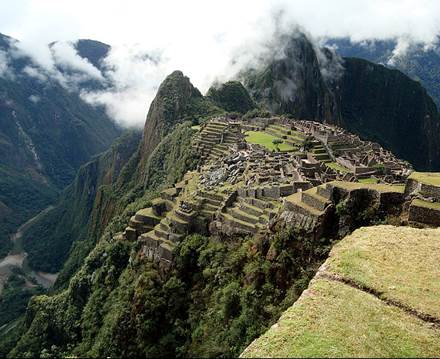The Native Americans met by Columbus in the Bahamas and the Caribbean belonged to relatively simple cultures. What the Spanish conquistadors found on the mainland was of an entirely different caliber. They discovered two great civilizations, the Aztecs and the Incas, each with populations in the millions. In this chapter we will describe their magnificent empires and also their downfall at the hands of the ruthless conquistadors Cortes and Pizarro, who with their superior military capabilities conquered these empires with only a handful of men, collecting vast wealth for Spain in the process.
The Aztecs
Around 1200, a people known as the Mexica migrated into the valley of Mexico. According to their own account, they came from a (perhaps mythical) place called Aztlan, from which the Europeans derived the name Aztecs. A century later, they settled around Lake Texcoco, where they began to search for a sign indicating where to build their new capital. The sign came in 1325, when an eagle landed on a cactus on a tiny swampy island in the lake, holding a snake in its mouth (which to this day is depicted on the Mexican flag). Using a special technique called chinampa, they drained the swamp and turned it into usable land for their city. They placed rows of poles in the water forming a square wall, which they then filled up with mud from the lake to create land. The resulting city, named Tenochtitlan, became the largest city in pre-Columbian America, with at its peak a population of about 200,000 people.
The city was incredibly sophisticated for its time. Since the water of the lake was salty, the Aztecs built aqueducts to bring in fresh water from a spring four kilometers away. Once these aqueducts reached the city, they fanned out to different neighborhoods, where the water was used for washing and cleaning. Drinking water was brought into the city from the same spring in bottles.
Fig. 446 – A map of Tenochtitlan made by one of Cortes’s men (1524) (Newberry Library, Chicago)
The Aztecs also built magnificent architecture in their capital. Atop their main temple, called Templo Mayor by the Spaniards, daily human sacrifices took place, amounting to thousands each year. We are told the victims were bent over a stone on their backs while priests used stone knives to cut out their beating hearts, which they then offered to the sun god Huitzilopochtli (see Fig. 447). The heart was then placed in a bowl held by a statue of a god, while the body was pushed down the stairs. There, the heads of the sacrificial victims were displayed on poles in rows in front of the temple. According to Cortes, there were so many they were impossible to count (see Fig. 448). The meat was then distributed among various participants. The point of these sacrifices was to appease the gods, to prevent them from unleashing their wrath. A Spanish friar described their fear of the gods during an eclipse:
There [was] tumult and disorder. All were disquieted, unnerved, frightened. Then there was weeping. […] There was shouting everywhere. People of light complexion were slain [as sacrifices]; captives were killed. All offered their blood; they drew straws through the lobes of their ears, which had been pierced. And in all the temples there was the singing of fitting chants; there was an uproar; there were war cries. It was thus said, “If the eclipse of the sun is complete; it will be dark forever! The demons of darkness will come down; they will eat men!” [42]
Understandably, the Spaniards were horrified by these practices and sought to eliminate them.
Fig. 447 – An Aztec priest performing a sacrificial offering of a heart to the war god Huitzilopochtli, from the Codex Magliabechiano (mid-16th century)
Fig. 448 – A relief of a skull rack from Chichen Itza (1524) (Gonzaderamos, CC BY-SA 3.0)
The most famous artwork from the Aztecs is the Calendar Stone, also called the Sun Stone (see Fig. 449). It is made of 12 tons of basalt and originally was likely part of the floor of the Templo Mayor. The figure in the center is the sun god Tonatiuh, with a flint knife as his tongue and arrows pointing outward symbolizing solar rays. The four glyphs around the inner circle represent four earlier stages of creation—called 4 jaguar, 4 wind, 4 rain, and 4 water—each associated with an earlier sun god. The sun god in the middle, Tonatiuh, is the fifth sun god of the current era and the entire shape in the inner circle represents the name of the fifth era: “4 movement” (compare with Fig. 451). In the second band we find 20 day-names and on the outer band a double-headed snake wraps around the stone, with their faces meeting at the bottom. From the mouths emerge two deities, the sun god and the fire god. On the snake’s body we see fire symbols, which identify it as Xiuhcoatl, the Fire Serpent. On the side of the stone are images of Venus and flint knives, both associated with war. It is hypothesized that the stone might have been a gladiatorial ring where sacrificial victims would be made to fight to the death, as a similar stone, the Stone of Tizoc, is known to have been used this way (this stone even has an indentation in the middle to place the heart and a channel to carry off the blood, with fighting scenes carved on the side).
Fig. 449 – The Sun Stone (early 16th century) (Gary Todd, CC0 1.0)
To the left and right of the Templo Mayor stood two temples dedicated to warriors, one dedicated to eagle warriors and the other to jaguar warriors. The role of these warriors was to subdue other peoples to obtain captives for human sacrifice. As the Aztec army grew stronger, they eventually managed to subjugate about 450 different states, which they would regularly ask for tribute.
The city also boasted many other facilities. For instance, boys were expected to attend public schools. For commoners, there was the telpochcalli, which focused primarily on military training, but also taught practical skills such as agricultural and building techniques. For the nobility there was the calmecac, designed to train future military leaders and high priests. It offered a more comprehensive education, which also included reading, writing, astronomy, history, calendar studies, and various other topics.
Teams of public service workers cleaned the city and maintained public land. Gardeners, streetsweepers, and garbage collectors ensured the city was remarkably orderly. There was even a police force that patrolled the city. The king also maintained a botanical garden with plants from all over Mesoamerica, a zoo with mammals, reptiles, and exotic birds, and an aquarium with both freshwater and saltwater ponds.
The Aztecs also greatly appreciated art. Statues could be found throughout the city and there were even museums of ancient cultures, filled with artifacts from Teotihuacan, Tula, and the Olmec. Special attention was paid to music. Poets were remembered for generations and there was the Cuicacalli (“House of Song”), which was an opera house and music school.
Besides tribute, another great source of wealth for the Aztecs was commerce. When Cortes toured the city’s main market an estimated 60,000 people were trading there. There were entire streets dedicated to a single product, such as pottery, clothing, jewelry, and slaves. There were also restaurants serving dishes from all over Mesoamerica. The markets were controlled by pochteca, traveling merchants (see Fig. 450), who also served as judges of the market. These same men were also employed by the king for diplomatic missions and acted as spies to assess new lands for conquest. Having a large degree of independence, they often became even wealthier than the nobles. Not being allowed to show this wealth in public, they often came home at night and wore rags to disguise themselves.
Fig. 450 – A pochteca merchant from the Codex Fejérváry-Mayer (late 15th century)
Fig. 451 – The glyph for “4 movement.”
The conquistadors
In the 16th century, the empires of Mesoamerica were shattered by the Spaniards. Their expeditions were led by military entrepreneurs known as conquistadors, the most remarkable being Hernan Cortes (1485–1547). Like the other conquistadors, Cortes was primarily motivated by conquest and the pursuit of gold. In fact, he once said: “We Spaniards have a disease of the heart that only gold can cure.”
Cortes moved from Spain to Hispaniola when he was 20 years old. Seven years later, he took part in the brutal conquest of Cuba. Once established there, he could have settled down as a rich landowner, but Cortes wanted more. He was intrigued by rumors of the Aztec civilization on the mainland and heard legends about their endless resources of silver and gold. The Cuban governor Diego Velazquez (1599–1660) appointed Cortes as captain-general of a new expedition to visit the empire. With his incredible charisma, Cortes managed to gather six ships and 300 men within a month. This made Velazquez extremely jealous, and as a result, he dismissed Cortes from his position. Ignoring this command, Cortes sailed to another Cuban port to gather more men and eventually left for the mainland. Once there, he founded the town of Vera Cruz, complete with a fort, a church, and houses, just to have himself elected captain-general and chief justice, thus shaking off the authority of Velazquez.
Fig. 452 – An 18th century portrait of Cortes based on as work from the 16th century (Real Academia de Bellas Artes de San Fernando, Spain)
In 1519, Cortes intended to head straight for Tenochtitlan, with an estimated population of 200,000, even though he had an army of only a few hundred men, about 15 horses, and 15 cannons. The Aztecs would be especially terrified by the horses, which were not native to the Americas. Not knowing what they were looking at, they assumed that the armored rider and the horse were one terrifying beast.
Cortes first deliberately sank his own fleet ensuring his men had no choice but to conquer or die. They soon met with Aztec messengers. They explained that Emperor Montezuma II (c. 1466–1520) welcomed them in his empire but did not want them to enter the capital. In return, Montezuma offered to pay tribute, including gold, cotton, feathers, and jade. According to Cortes, Montezuma was concerned about a prophecy, which stated that a descendant of their original ruler would arrive at their city from overseas. The Florentine Codex (written in the second half of the 16th century) embellished the story, equating the descendant with the god Quetzalcoatl, who had once sailed across the sea and was expected to return on the calendar date “one reed,” which exactly corresponds to 1519, the year that Cortes arrived. [273]
On his way to the capital, Cortes met with Xicomecoatl, the leader of the Totonac people. Like most states under Aztec control, the Totonac despised their overlords, who required them to pay large tributes and who raped their women and captured their men for human sacrifice. Cortes recognized this as a great opportunity to gain some allies. The Totonac also suggested he visit the Tlaxcalans, who also hated the Aztecs, but they turned on the Spaniards with an army of about 3000 men. Cortes soon gained the upper hand, killing many Tlaxcalans and also capturing three of its captains. When the fighting ceased, Cortes released the prisoners as a peace gesture. When they attacked again, they were once more defeated, after which they surrendered.
Hearing what had happened, Montezuma changed his strategy and decided to invite the Spaniards to the capital. Cortes’s soldiers advised against the plan, arguing they stood no chance against such a huge population. Never in the history of the world had anyone attempted anything like this. But then Cortes, who was trained as a lawyer back in Spain, delivered one of his great speeches and managed to convince his men that they could make history.
When they finally saw the city, with its stepped-pyramid temples, its palaces, and its colorful marketplaces, they could hardly believe their eyes. In one account, we read:
When we saw so many cities and villages built in the water and other great towns on dry land, we were amazed and said that it was like the enchantments they tell us of in the legend […]. And some of our soldiers even asked whether the things were not a dream. [274]
In the center of the city, Cortes met Montezuma, who received him as a guest in his palace. The palace was a two-story building with hundreds of rooms, many filled with tribute. For entertainment, there were dwarves, jesters and singers. The first week in the city went well. The Spaniards were shown around the city and were invited to feasts in their honor. They also witnessed human sacrifices, which horrified them. Things changed when Cortes discovered that Montezuma secretly planned to bring an army to the city. In response, he took the emperor hostage. For six months Montezuma was held captive in his own city. Cleverly, the emperor was allowed to perform all his usual functions, but now with Cortes making the decisions behind the scenes. As a result, life in the city continued as normal. The two men spent much time together, conversing and playing board games, and they even became friends.
Cortes was also granted access to an Aztec vault, which contained a total of 20,000 kilograms of gold and he was given the locations of three gold mines. At this point, things were looking pretty good for Cortes and his men. They had managed to take control of the Aztec Empire without a fight and were rich beyond their wildest fantasies, but things were about to get complicated.
In 1520, Cortes found out that Velazquez had sent 18 ships and 900 men to arrest him for mutiny and treason. Cortes decided to face them head on, leaving Pedro de Alvarado (1485–1541) in charge of the city (which was the biggest mistake of his life). Cortes won the battle, using the Tlaxcalans as his allies, and even managed to get the surviving soldiers on his side by promising them a huge pile of gold.
But while Cortes had been away, Alvarado had exploded with rage when the natives were once again feasting on human flesh in honor of their gods. He closed the exits to the palace and massacred hundreds of members of the Aztec nobility. When Cortes returned, now with an army of 1200 men, thousands of Aztecs attacked him. Montezuma, who appeared on a rooftop, was forced to tell his people to quiet down, but then one of his own subjects threw a rock at him, which eventually caused his death. The Spanish then began to run for their lives to escape from the city, some taking as much gold with them as they could. Many Spaniards were captured and sacrificed and more than half of Cortes’s men never made it out.
It would have been sensible for Cortes to return to Cuba, but giving up was not in his nature. In 1521, he returned with a small army, supported by about 100,000 native allies, in an attempt to conquer Tenochtitlan by force. By that time, the Spaniards had the advantage that Old World diseases were starting to affect the Aztec population. After a siege that lasted for about three months, the Aztecs were defeated and the city was destroyed. The soldier quoted earlier recounted:
No land like it would ever be discovered in the whole world, […] but today all that I then saw is overthrown and destroyed; nothing is left standing. [274]
With the fall of Tenochtitlan, the entire Aztec empire, with an estimated population of five million, surrendered—making it one of the most remarkable military victories in the history of the world. The Aztec Empire was renamed New Spain, which Cortes personally governed from 1521 to 1524. The capital became Mexico City. The Spanish tore down the Templo Mayor and used the materials to construct a cathedral and palaces for the conquistadors. What little remains of Tenochtitlan is now buried beneath the city.
Fig. 453 – Cortes meeting Montezuma, drawn by a local Tlaxcalan (Berkeley Library)
Fig. 454 – The Spanish with their Tlaxcalan allies against the Aztec empire. (copies of 16th-century drawings) (Berkeley Library)
The Inca predecessors
The Inca referred to Lake Titicaca in Peru as their place of origin. According to their myths, the creator deity Viracocha emerged from the lake. Once on land, he first created the heavenly bodies and then human beings. At some point Viracocha covered the Earth with a massive flood, saving only his grandson and granddaughter Manco Capac and Mama Uqllu, who then founded the Inca civilization.
Around 200 AD, more than a thousand years before the Inca civilization arose, a site near the lake was constructed called Tiwanaku. Some of its monuments were built of enormous monolithic structures, with some stones weighing up to 30 tons and taken from a source 20 kilometers away (see Fig. 455). The stones were often tightly fitted together, sometimes with the use of bronze clasps (see Fig. 456).
Another important precursor to the Inca is the Wari civilization, which developed around 500 AD. Similar to the Inca, they built multistory houses, kept mummies in shrines in their houses, and relied heavily on camelids for food, wool, and labor. They also created an extensive (sometimes paved) road system, with some roads extending over hundreds of kilometers, complete with rest- and storage houses called tambos. The Inca would later build over many of the Wari roads, extending it to cover an estimated 5500 kilometers. Rope bridges were employed to traverse chasms in the mountains. Interestingly, even llamas were known to cross these bridges. The Incas also employed a system of runners called chaskis to quickly transport messages and small goods. One chaski would run about 20 kilometers, from one tambo to the next, and then passed on the goods to another.
Fig. 455 – The Kalasasaya Temple of Tiwanaku with at the back the Ponce Monolith (200 AD) (Pavel Spindler, CC BY 3.0)
Fig. 456 – Indentations that used to contain a bronze clasp used to tightly fit stones together.
Fig. 457 – A toy with wheels from Mexico (c. 1000 AD) (Daderot, CC0 1.0, Staatliche Museen zu Berlin-Ethnologisches Museum, Germany)
These roads were not used for wheeled vehicles, as they did not exist in pre-Columbian America. From this, you might assume they did not invent the wheel, but this is not the case, as they did make wheeled toys (see Fig. 457). The roads were only used for walking and camelids.
The Wari also seem to have been the first to extensively use the khipu writing system (there is only one khipu from an earlier civilization, which is depicted in the chapter “The Vision Serpent” in Part I of the book). A khipu is a series of connected ropes on which knots are tied to store information. Primary sources tell they were made by scribes known as khipucamayuqs. We have since figured out they used a decimal positioning system for numbers, but there is still no consensus on whether the system can also encode words. Fragmentary evidence in support of this theory comes from the early chroniclers. In the 1540s, one of them wrote of an extensive library of khipus in Cuzco that supposedly recorded more than 500 years of history. A priest from the 1570s similarly claimed he had scribes read him a detailed history from a collection of khipu, after which he burned them and had the scribes executed.
The Inca
All chroniclers agree that there were 12 legitimate Inca rulers. The first Inca was mentioned earlier, Manco Capac. He is said to have established Cuzco, the capital of the Incas. The second Inca, Sinchi Roca, is said to have terraced the valley and started planting corn and potatoes. The 9th Inca, Pachacuti Inca Yupanqui, who took the throne in 1438, became the most famous Inca ruler, as he established the Inca empire. He conquered many kingdoms and required its inhabitants to participate in community service called m’ita, giving the Inca a workforce of millions. In return, the Inca provided security, built agricultural terraces, irrigation, public buildings, and roads, and organized feasts. Their agricultural system was so effective that they effectively ended hunger in their empire. Not surprisingly, many kingdoms even decided to join voluntarily. The next ruler, Tupac Inca, expanded the empire even more. The empire was at its peak during the rule of the 11th Inca, Huayna Capac, when the empire counted about 10 million inhabitants.
Using its large workforce, the Inca created magnificent architecture, especially in Cuzco. Much of the city was taken up by gigantic palaces, one for each of the Inca rulers. Some were built by stones of modest size and were sometimes held together by bronze clasps for a tighter fit. Other constructions were made of stones weighing many tons. These stones are often oddly shaped, but were still made to perfectly fit together, as can be seen on the outside of the Palace of Inca Roca, the 6th Inca (see Fig. 458).
The central temple of the city, called Coricancha, was home to the royal mummies. The souls of the past Inca rulers were believed to reside in the mummies and, as long as the body stayed intact, it was believed they could still exert influence over the empire. The royal mummies were often treated as though still alive. Priests took care of them, giving them companionship and even food and chicha beer. They were also taken out to the main plaza for festivals (see Fig. 459). Unfortunately, the Spanish burned them all. The temple itself was dedicated to the sun and covered in golden plates, both on the inside and the outside (which were quickly melted down by the Spaniards). On the interior of the temple were shrines to the sun, moon, stars, rainbows, and lightning. The chronicles also speak of a spectacular garden in front of the temple, filled with gold-covered life-size statues of creatures from all over the empire, as well as golden trees with silver leaves.
Fig. 458 – Stones on the outside of the palace of Inca Roca. Notice the center stone has 12 corners, yet fits perfectly with the surrounding stones (Unukorno, CC BY 3.0)
Cuzco also had a number of towers (also destroyed by the Spaniards), which were said to mark important positions of the moon and the sun, including the solstices. There were also many storehouses called collca, used for storing the tribute that came from all corners of the empire.
Most famous today is Machu Picchu, which was a palace built for Inca Pachacuti in the mid-15th century (see Fig. 460). It would take a chaski a three-hour run to arrive there from Cuzco. Some of its buildings are believed to align with astronomical events. For instance, at the Sun Temple, light comes in through a window to line up with a carved line on the floor during the winter solstice, when the sun comes up over the tallest peak in the valley. There is also a rock that looks remarkably like the Southern Cross constellation that is only visible on the southern side of the globe. Finally, there is also a stone object called Intihuatana (“the hitching post of the sun”) which the Inca believed would hitch the sun at its farthest points on the solstice to keep it from flying off the horizon.
Fig. 459 – An image from The First New Chronicle and Good Government by the indigenous Peruvian Felipe Guaman Poma de Ayala, showing a royal mummy being carried outside for a festival (1615)
Fig. 460 – Machu Picchu (mid-15th century). The palace was built on a mountain ridge at a height of about 2400 meters. Cuzco itself is higher, at about 3400 meters. (Elena Tatiana Chis, CC BY-SA 4.0)
Aleixo Garcia
The first westerner to make contact with the Inca Empire was the Portuguese explorer Aleixo Garcia (d. 1525). Garcia, together with a couple of his men, had survived a shipwreck in Brazil and came to live with the Guarani tribe. After hearing of a civilization in Peru with lots of gold, he traveled all the way through mainland South America to find it. Garcia did not survive the encounter but was there long enough to infect the Incas with smallpox. The disease spread quickly, killing millions in the following decades. As the Incas believed illness was an attack by the gods, this greatly confused and demoralized them. In 1528, three years before the arrival of Pizarro, both Huayna Capac, the 11th Inca, and his heir died of smallpox, creating chaos in the empire. Two other sons of the emperor, Huascar (d. 1532) and his half-brother Atahualpa (c. 1502–1533), claimed the throne, which resulted in a civil war. Atahualpa finally captured Huascar and killed him after first killing his family in front of him and burning the mummy of their ancestor Tupac Inca (who was related to Atahualpa only on his father’s side, while Huascar was related to him via both parents).
Pizarro
Unlike Cortes, the conquistador Francisco Pizarro (c. 1471–1541) was uneducated and had spent his early years as a pig farmer, but since he was a strong warrior, he quickly rose through the ranks. In 1529, he got permission from the Spanish crown to invade the Inca Empire, which had an estimated 10 million inhabitants. In 1531, Pizarro arrived with 180 men and 27 horses. Although weakened by disease and civil war, Atahualpa was not intimidated by such a small army. He decided to meet them on the battle field. There, they were first met by a single Spanish friar holding a Bible, as the Crown had commanded Pizarro to convert. But Atahualpa threw the Bible to the ground, which gave Pizarro the excuse he needed to attack. Spanish cannons fired into the Incan army and Atahualpa was captured at knifepoint by Pizarro himself. The Spanish managed to kill thousands of Incas with no fatalities of their own. The Incas were simply no match for their swords, guns, cannons, and horses. Out of fear of execution, Atahualpa finally ordered an end to the attack. Pizarro asked as ransom a room full of gold and silver, but when this was delivered, they still wouldn’t release him. They kept him prisoner for eight months, until Pizarro finally executed him. At first, Pizarro wanted him burned at the stake, but at the last moment Atahualpa agreed to be baptized for which he got a slightly lighter sentence—strangulation.
Pizarro then installed Huascar’s younger brother Thupa Wallpa on the throne, whom he fully controlled behind the scenes. Using his false authority, Pizarro entered Cuzco unopposed in 1533, less than a century after the founding of the Inca Empire. The city was sacked, the gold was melted down, and temples and palaces were torn down to make place for Catholic cathedrals. One year later, Thupa Wallpa died of smallpox, after which the 17-year-old Manco Inca (1516–1544) was placed on the throne. Manco enjoyed his position for a few years, but then escaped and became leader of an Inca rebellion (the final straw was Pizarro stealing his wife). He managed to create an army of 200,000 men, won a crucial battle against the Spaniards, laid siege on Cuzco, but was finally pushed back. Manco Inca then created a fortress called Vilcabamba, 200 km away from Cuzco, which would remain an independent capital for decades until the last rebellious ruler, Tupac Amaru, was captured and executed in 1572.
Pizarro was finally betrayed by his partner Diego de Almagro (c. 1475–1538), who had been rewarded only useless territory. In response, he tried to take over Pizarro’s newly established capital Ciudad de Los Reyes (now Lima), but was defeated. Pizarro then took his land, leaving his sons bankrupt. One of these sons finally captured Pizarro at his dinner table and killed him. His severed head was placed in a box and buried under the main cathedral. It was finally dug up in 1977.
El Dorado
Several conquistadors also set out to look for mythical places that were products of the European imagination. For instance, the Spanish conquistador Ponce de León (c. 1474–1521) arrived in Florida, looking for the Fountain of Youth. His colleague Vázquez de Coronado (1510–1554) went looking for the fabled Seven Cities of Gold in New Mexico. Various explorers also went on expeditions to find a mythical chief named El Dorado (“The Golden One”). According to natives, he headed a tribe in the Andes mountains. It was said that whenever a new chief came to power, he would cover himself in gold dust and move to the middle of a lake on a raft. He then washed off the gold while his attendants threw gold and precious jewels into the lake to appease the gods. Believing this tribe must have access to untold amounts of gold, various explorers set out to find it. As the legend evolved, El Dorado eventually turned into a mythical golden city and later even a kingdom.
On a number of occasions, Spain actually did find riches beyond their wildest dreams. In 1545, an Inca named Diego Huallpa, while searching for escaped llamas, stumbled upon one of the largest silver deposits in history. The Spanish took an estimated total of 3 million kilograms of silver back home, twice as much silver as existed in Europe at the time.
All
this silver would sustain Spanish dominance for a couple of decades, but
ironically, it then caused the decline of Spain in the first half of the 17th
century. How did this happen? First of all, Spain overreached itself.
The empire had become too large to manage and defend, while Spain was also
engaged in various wars back home. The huge influx of silver also created heavy
inflation (as always happens when the money supply increases), causing
economic instability and social unrest. Another problem was that the Spanish
economy became overfocused on the extraction of silver and gold, while leaving other
sectors, such as agriculture, underdeveloped. This wasn’t a
big problem as long as silver could be used to import food, but when the silver
ran out, it caused the economic system to collapse.
TABLE OF CONTENT

